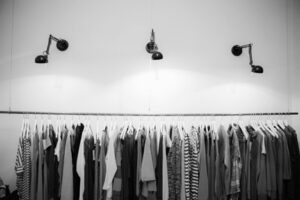
Is Your Retail Store’s Interior Hurting Your Brand?
In the world of fashion, first impressions matter. The moment a customer steps inside your store, they begin forming an opinion about your products but also about your brand as a whole. The way your space looks, feels, and even smells communicates something long before a sales associate greets them. Yet many retailers overlook one crucial aspect: the store’s interior. A poorly designed, outdated, or unmaintained interior could be silently hurting your brand, driving away potential customers, and undermining your hard-earned reputation.
So, is your retail store’s interior helping you stand out or holding you back? Let’s take a deeper look.
The Psychology of Store Design
Fashion is about aspiration, identity, and expression. Customers walk into your store hoping to experience an atmosphere that inspires confidence in their style choices. Studies show that shoppers make subconscious judgments about a brand within 90 seconds of their first interaction, and a significant portion of that judgment is based on visual cues.
If your store interior is cluttered, dimly lit, or outdated, it sends the wrong message. Instead of associating your brand with sophistication, modernity, or exclusivity, customers may perceive it as careless, unappealing, or untrustworthy.
Common Interior Mistakes That Hurt Your Brand
Poor Lighting
Harsh fluorescent bulbs can make your store feel sterile, while overly dim lighting can make browsing frustrating. The right balance of natural light, ambient light, and spotlighting can elevate your products, making fabrics look more vibrant and textures more inviting.
Cluttered Layouts
A cramped, confusing layout discourages exploration. Shoppers want a natural flow as they move from one section to another. Overcrowded racks, poorly placed furniture, or narrow aisles make your store feel overwhelming and detract from the shopping experience.
Outdated Fixtures and Furniture
If your mannequins, racks, or checkout counters look like they haven’t been updated in years, it reflects poorly on your brand. Customers may subconsciously assume your fashion is outdated, even if your collections are fresh and trendy.
Neglected Maintenance
Scuffed floors, peeling paint, dirty mirrors, or broken displays scream neglect. A customer might not consciously notice every detail, but these small cues add up, creating a perception of poor quality control.
Lack of Brand Identity
Your interior should tell your brand’s story. If someone walked in without seeing your signage, could they guess what your brand represents? A lack of cohesive branding elements creates confusion and weakens your identity.
Why Interior Design is an Extension of Your Brand
Minimalist interiors might align with a modern, upscale label. Bright and playful designs might work best for a youth-oriented streetwear brand. Rustic wood and vintage décor could enhance a heritage-inspired line.
If your interior design doesn’t align with your brand story, customers experience a disconnect. Imagine walking into a high-end boutique where luxury fabrics are hung under buzzing fluorescent lights and surrounded by chipped furniture—it immediately diminishes the sense of exclusivity.
The Role of Cleanliness and Maintenance
Even the most beautifully designed store loses its impact if it isn’t well maintained. A streaked window, dusty shelf, or overflowing trash bin might seem minor, but it communicates a lack of attention to detail. In fashion, where presentation is everything, neglecting cleanliness can damage credibility.
Partnering with professional facility management providers like RKB Facility Solutions ensures that your store not only looks its best but consistently reflects the quality of your brand. From routine cleaning to preventative maintenance, the right partner helps preserve your brand image and customer trust.
How a Well-Designed Interior Boosts Sales
The right environment encourages customers to linger, browse, and buy. Here’s how:
• Emotional Connection: A store that feels inviting creates positive emotions, making customers more likely to return.
• Ease of Shopping: Clear navigation and thoughtful layouts make it easy for shoppers to find what they’re looking for.
• Product Highlighting: Strategic lighting and display placement draw attention to key pieces, encouraging upsells.
• Brand Loyalty: A consistent and appealing environment reinforces your brand identity, keeping you top-of-mind for future purchases.
Practical Steps to Improve Your Store Interior
• Audit Your Space: Walk through your store as if you were a first-time customer. What stands out? What feels off-putting?
• Upgrade Lighting: Invest in adjustable lighting that highlights products while creating ambiance.
• Streamline Layouts: Ensure aisles are spacious and intuitive, making it easy to browse.
• Refresh Fixtures: Replace or refurbish outdated furniture, racks, and décor.
• Prioritize Cleanliness: Schedule regular deep cleans and ongoing maintenance.
• Infuse Brand Elements: Incorporate colors, textures, and displays that reflect your brand identity.
The Bottom Line
Your fashion store’s interior is a powerful tool that shapes customer perceptions and directly impacts sales. Neglecting it could quietly sabotage your brand, no matter how strong your collections are. By investing in thoughtful design, consistent maintenance, and professional facility management, you ensure that your space enhances your brand rather than undermines it.
At RKB Facility Solutions, we help retailers protect their brand by keeping their spaces clean, inviting, and true to their identity. Because when your store looks its best, your brand shines its brightest.
Ready to elevate your fashion store’s interior? Contact RKB Facility Solutions today and let us help you create an environment that reflects the quality, style, and confidence your brand deserves.







